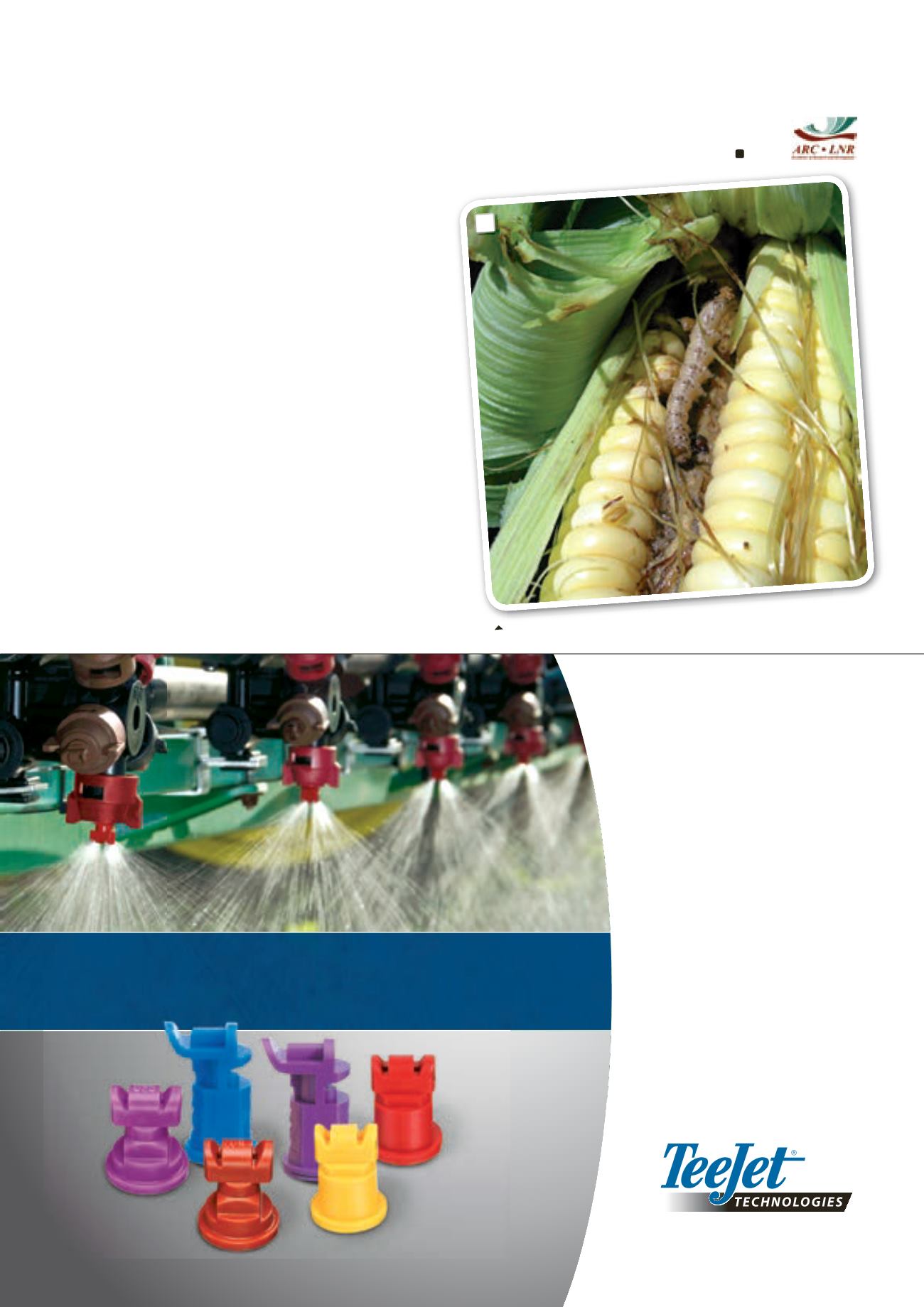
Jysaldiebestespuitkopkryvir
jou toepassing inonsvolle lynvan
dubbelpatroonuitsaai spuitkoppe.
Kiesuitdriespuitkoppe:
TTJ60TurboTwinJet: BesteDekking
Medium tot growwedruppels en ‘nnouhoek
tussen spuitpatronebieduitstekendedekking
enpenetrasie vir kontak onkruiddoders en
swamdoders.
AITTJ60Lug InduksieTurboTwinJet:
BesteDryfbeheer
Growwe tot uiters growwe druppels verminder
dryf en ‘ndubbelepatroon verbeter dekking vir
gebruikmet sistemieseonkruiddoders.
AI3070: BesteSiektebeheervirGrane
Uniekegepatenteerdeontwerp konsentreer
sproei opdiegraankop vir beter bedekking
wanneer swamdoders gebruikword.
TWEEREDESOMTEEJETTWINJETSPUITKOPPETE
GEBRUIKTWINSPUITKOPPE:
BESTEDEKKING&DRYFBEHEER
AITTJ60Lug
InduksieTurbo
TwinJet
AI3070Spuitkop
TTJ60Turbo
TwinJet
®
Leermeeropwww.teejet.com
Maize residuesprovide ahabitat for stemborer larval populations to
surviveharshwinter conditions. Removal of stubbleandploughing it
into theground, reduces stemborer larval populations.
Adaptation of planting dates to avoid periods of moth flights by
planting short growing seasonmaize varieties can result in escape
of damage and limit yield loss through the control of stem borers
which have been shown to indirectly increase Fusarium ear rot and
concomitant fumonisin production. Controlling stem borers will
therefore indirectly reduce Fusarium ear rot.
Agricultural practices such as planting hybrids that are adapted to
local climatic conditions, theuseof hybridswith tight husks, control
of ear feeding insects, avoiding excessive plant populations, main-
taining adequate levels of nitrogen andother essential growthnutri-
ents, crop rotation, and sub-soiling in compacted soils tominimise
plant stress, are someof thepossiblemeans that can reduce the risk
of pre-harvest contamination.
Fusarium verticillioides
can infect maize through systemic growth
from infected seed; therefore, planting farm saved seed could po-
tentially increase
F. verticillioides
infectionwhichmight in turn result
in Fusarium ear rot.
Resistance
Planting resistant varieties tomanage stem borers are probably the
most common and in many cases the only preventive pest control
practicepromotedby integratedpestmanagement programmes.
Maize cultivars that are resistant to themajor ear rot fungi and their
mycotoxins are not yet available in South Africa. Nevertheless,
a collaborative study conducted by researchers at Stellenbosch
University and the ARC-GCI showed that some inbred lines were
4: A
Busseola fusca
larvae.
Photo: A. Erasmus
resistant toFusariumearrotand fumonisincontamina-
tionduring artificially inoculated trials, but significant
inbred x-location interactionswereobserved.
4


